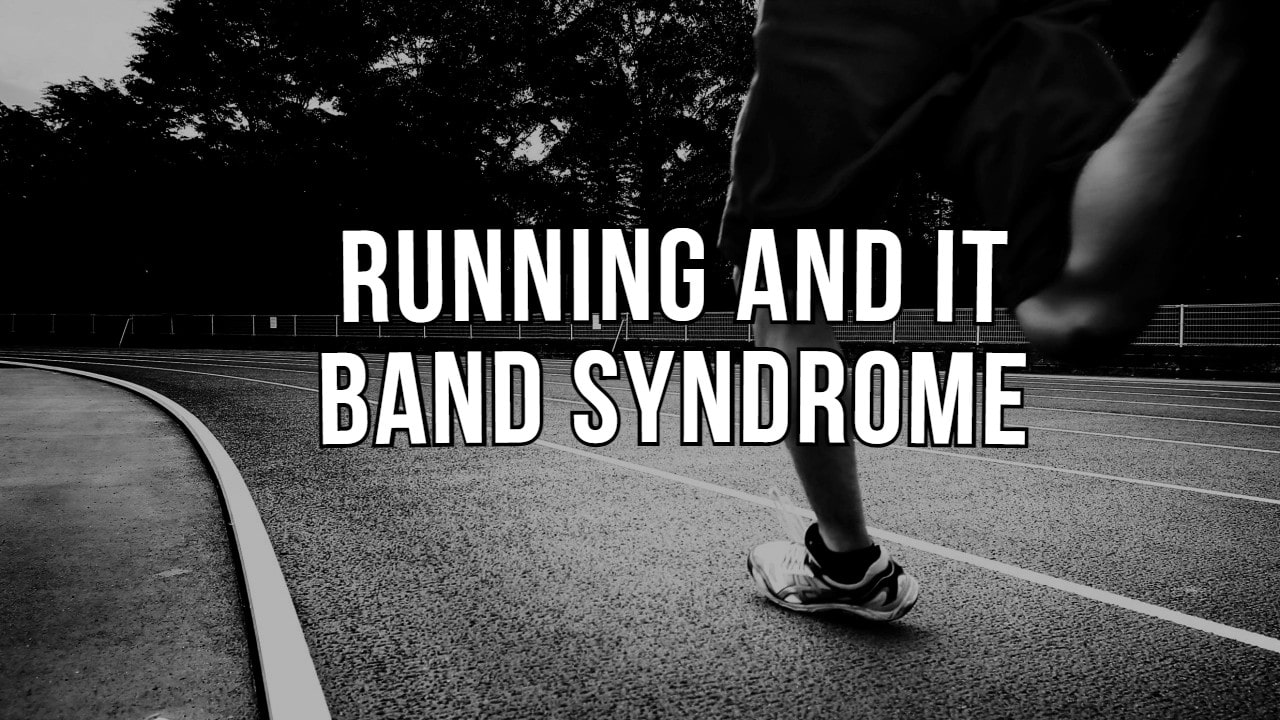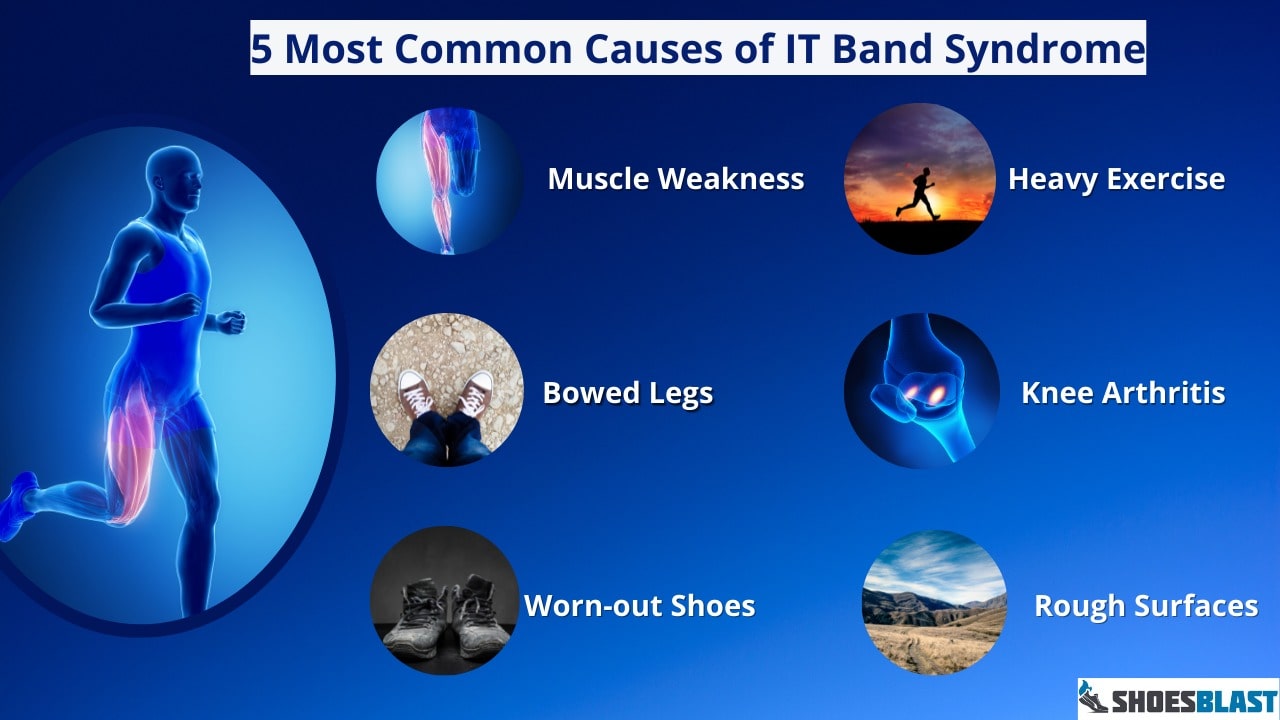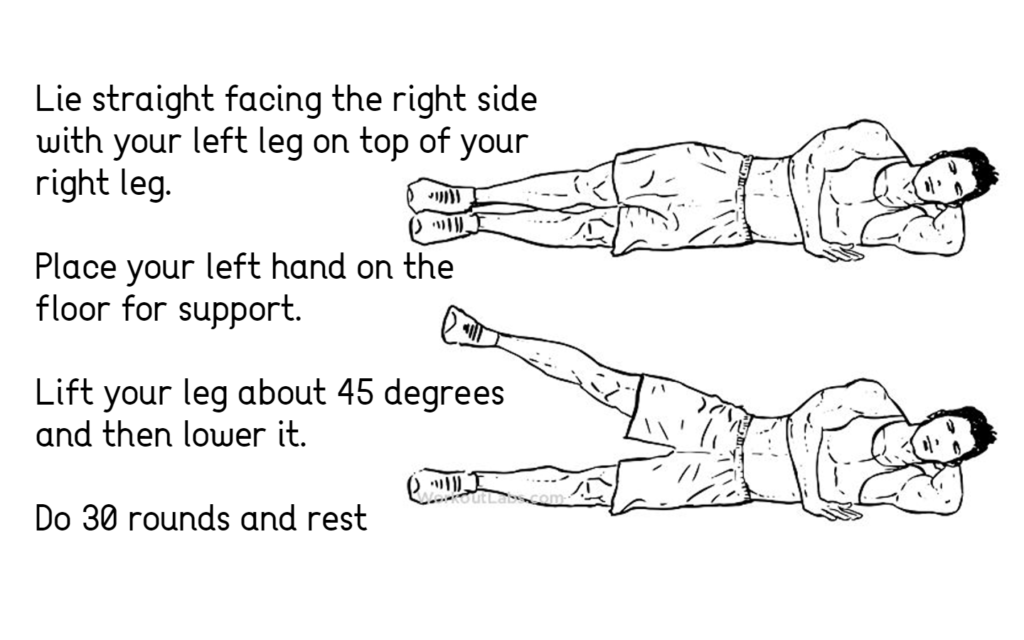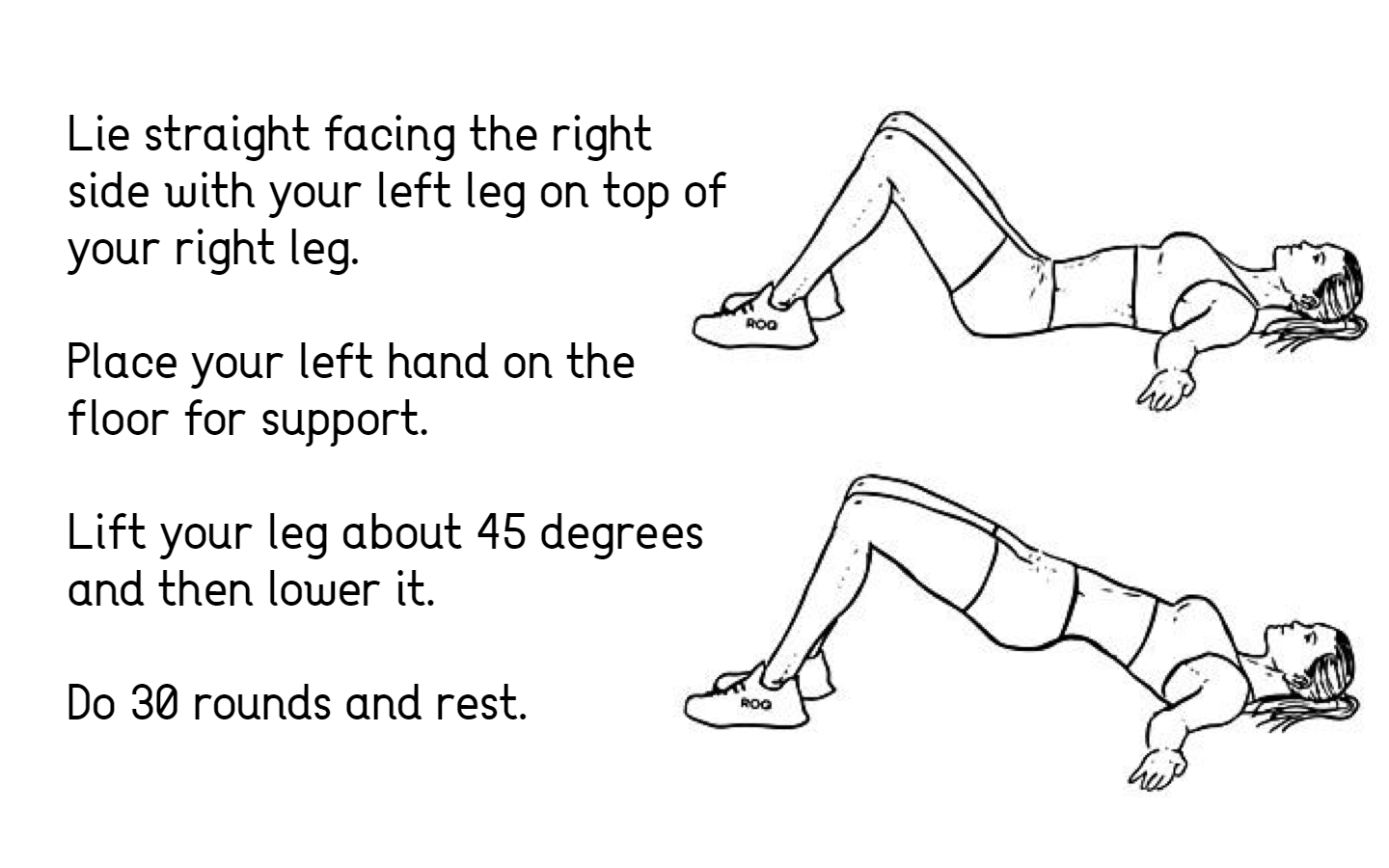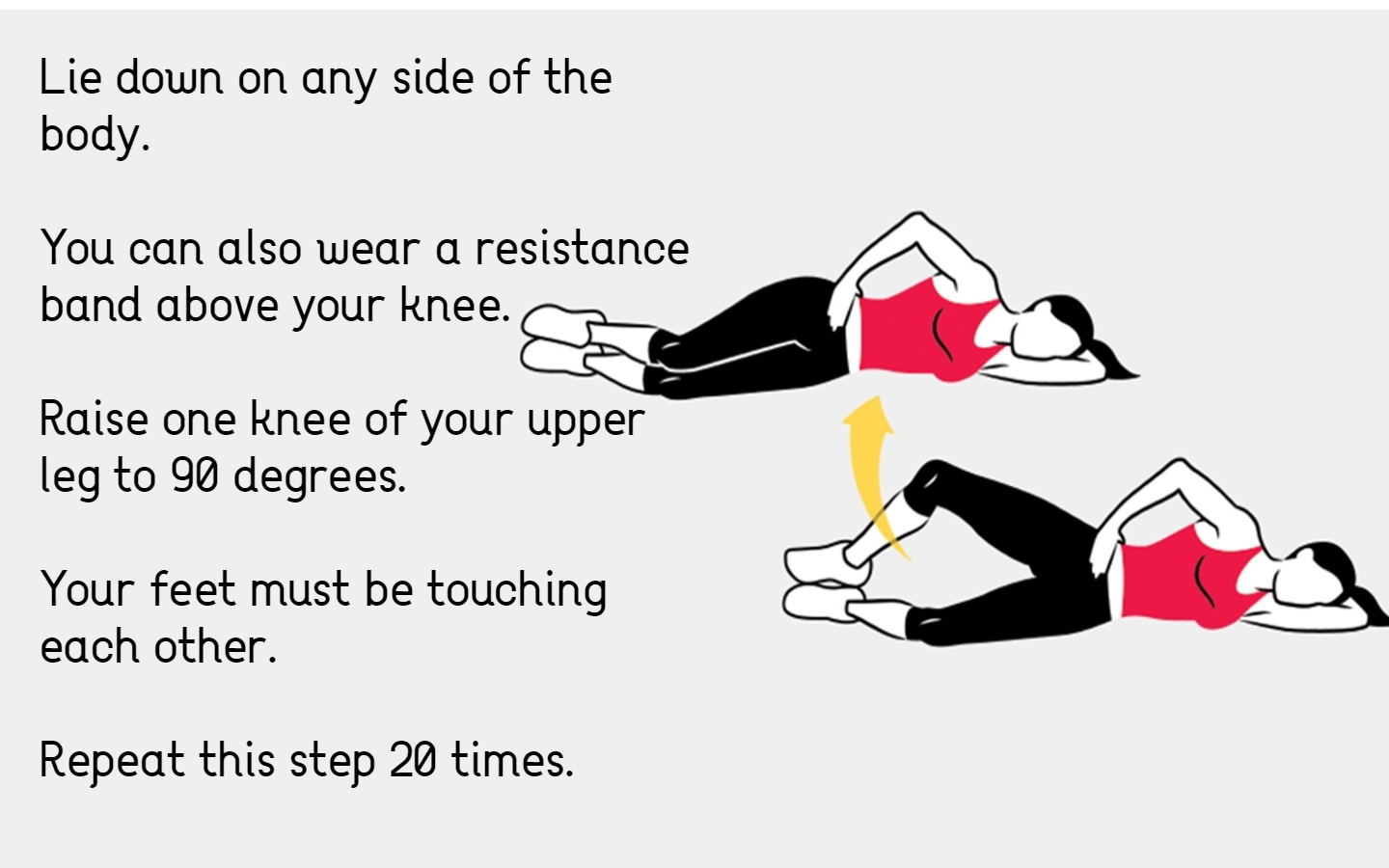In This Article
You’ve stopped right in the middle of the track, feeling a tingling sensation on your upper knee. And as you try to run further, the pain in your upper knee starts getting worse.
Just like any runner, you explore hundreds of articles and try different workouts and IT band stretches. And no surprise- your IT Band still hurts.
Rest assured! In this article, firstly, we’ll learn about the IT band and then identify the causes that might be leading to ITBS. Further, we’ve also mentioned some practical ways to heal ITBS faster, clearing some misconceptions related to IT band stretching.
Having said that, let’s deep dive into the article!
How Much IT Band Is Important In Runners?
Calling your IT Band a leg battery won’t be wrong. It stores elastic potential energy and then releases it during your running stride.
The Iliotibial band is a strong and thick tendon running down the side of your leg. While you run or cycle, this strong tendon works with hip muscles to provide stability during the stance phase. It has a robust shock-absorbing ability which aids in relieving tension on your knee.
During the stance phase of running stride, when your foot touches the ground, your IT band contracts and supports your knee movements. It also helps in the outward movement of the thigh, generating a force that helps you run for longer miles.
Taking care of your IT band is necessary to build endurance. And this is why most experts advise athletes, runners, or cyclists to train their IT bands through exercise.
Common Causes Of ITBS
Long-distance running is the most common cause of ITBS that tightens your IT Band causing inflammation, swelling, and knee pain. Though the leading cause of ITBS is still debatable, most doctors deduced that weak hip abductors and thigh muscles cause ITBS.
The latest research has found an association between weak hip muscles with ITB syndrome. Weak hip muscles, especially gluteal muscles, cause more tension in the iliotibial band, which leads to overworking. Hence, the muscles need more energy to contract and fatigue quickly.
Who Are At Greater Risk?
Some conditions that exacerbate the risks of getting ITBS are mentioned below:
People With Physical Conditions
People who have a greater risk of getting IT band syndrome include:
- Bowed legs
- Knee arthritis
- Weak hip or thigh muscles
- Tight tissues
People Who Train On Wrong Surfaces:
Regular training on cracked or bumpy surfaces puts pressure on your upper leg muscles straining your knee. You must avoid:
- Running on rough hills
- Training on bumpy surfaces
- Banked running surfaces
- Continues Running on rigid surfaces like concrete.
Overtraining or Heavy Exercise
- Strenuous workouts without rest
- Wearing worn-out sneakers or the wrong shoes
- Not warming up
- Missing out stretches
How Does ITBS Influence Your Knee As Runner?
In Iliotibial Band Syndrome, your knee joint hurts to the extent that it affects your training and running schedules. It happens when your IT band becomes tight due to heavy running and squeezes against your bone causing inflammation and pain. You might also feel a clicking sound when ITB snaps across the joint.
If you continue running for longer miles with ITBS, your pain might worsen as your knee might not be able to sustain the pressure when ITB weakens. Therefore, you must consult your therapist and take measures to get your tendons back in action.
If you ignore ITBS for a longer time, it might lead to chronic hip pain or knee arthritis. So, experts always suggest runners take proper steps at the right time.
Can You Run with IT Band Syndrome?
Yes, you can run with ITBS but running while your knee hurts is a painful experience. For athletes or marathon runners, most experts and physical therapists suggest continuing low-impact training with ITBS. But on the other hand, they also advise taking necessary precautions at the right time to prevent the worsening of the inflamed tissue.
Look at the best running shoes for ITBS
As soon as you identify ITBS, it’s best not to run and rest immediately. Give your tendons the time to heal, and then get back to running. A sport-medicine podiatrist concludes that 85% of runners who rest instantly heal faster and the pain doesn’t come back in the future.
The amount of rest you need from running depends on the severity of the symptoms. If you feel severe pain and discomfort, 2-4 weeks of rest and treatment are enough to get back on track.
Remember, if you do not undergo complete rehabilitation, your symptoms might come back in the future. See, how many running shoes you should have.
How To Recover From IT Band Syndrome Faster?
Are you tired of trying different stretches and yet suffering from ITBS? Almost all the articles on the internet recommend many ways to stretch your IT Band. But recent studies suggest that it is anatomically impossible to stretch your IT band.
You cannot stretch every part of your body, and when we talk about IT Band, it is the toughest and most massive tendon that connects bone to bone. One study shows that a 2000 lb force is required to stretch your ITB by 1%.
Therefore, bearing the pain of foam rolling or other multiple stretches will not fix your ITBS. So, what are the effective ways to heal faster from IT Band Syndrome?
- Take complete rest of few weeks.
- Use medications to relieve pain
- Increase muscle strength
- Get more sleep
1. Take Complete Rest of the Few Weeks
The pain in ITBS is usually worsened due to long runs. Reducing your training for 2 to 4 weeks will release stress on your IT band, giving it time to heal. Most therapists recommend resting immediately when you notice ITBS. However, if you continue running, try not to run for longer miles.
Additionally, apply ice packs over the affected area to reduce inflammation and pain whenever you feel pain during the recovery phase.
2. Use Medications To Relieve Pain
As soon as you feel pain, consult your doctor to discuss your condition. Most doctors suggest a short course of non-steroidal anti-inflammatory drugs like ibuprofen or naproxen to help decrease pain, swelling, and fever. However, always ask your physician whether NSAIDs are safer for you or not.
If the symptoms, such as swelling or pain, do not improve, your physician will prescribe you corticosteroid injections.
3. Increase Muscle Strength
After your pain subsides, strengthening the surrounding muscles of ITB is one effective to regain your energy and promote indirect healing of the IT band. A good muscle-moving technique with proper counseling about ITB anatomy can help you understand ITBS better.
Weak gluteal and hip muscles often lead to IT band syndrome, so increasing muscle strength is necessary. The following targeted exercises can help you get back on track:
Side-leg Raises
This exercise targets your hip muscles, improving strength and supporting your lower leg.
2. Hip Thrusts
This exercise targets your hip muscles, improving strength and supporting your lower leg.
3. Clam Shells
What Exercise to Avoid if you have ITBS
There are a few exercises to avoid if you have ITBS or iliotibial band syndrome. These exercises put unnecessary strain on the iliotibial band, which is the large band of tissue that runs along the outside of the thigh.
The first exercise to avoid is any type of squatting movement. This includes exercises like air squats, back squats, and front squats. While squats are great for overall leg development, they put a lot of strain on the iliotibial band. If you have ITBS, it’s best to avoid squats altogether.
Another exercise to avoid is running. When we mean running, it’s running too much. A light running that is not hurting your ITBS is okay and might be good with recovery but don’t do over it. This is because running puts a lot of impact on the iliotibial band. If you have ITBS, it’s best to avoid running or any other high-impact exercise. Instead, focus on low-impact exercises like cycling or swimming.
Finally, avoid any type of stretching exercise that involves the iliotibial band. This includes exercises like leg swings and standing side bends. These types of exercises can actually aggravate ITBS and should be avoided.
Well, the best and the best thing is to consult with the doctor before starting anything. It is because the right exercise can make and the bad exercise can make it worse.
FAQ’s
Running and It Band Syndrome: Takeaway
To sum up, if you suffer from IT band syndrome, it is essential to understand the anatomy of ITB and its functions so that you do not fall into the trap of wrong treatments. There are hundreds of myths and misconceptions that ITBS patients often ignore.
Seek medical attention immediately and take the right steps to cure ITBS successfully and prevent relapses in the future.

PharmD, Salim Habib University | A Medical and Healthcare Writer

